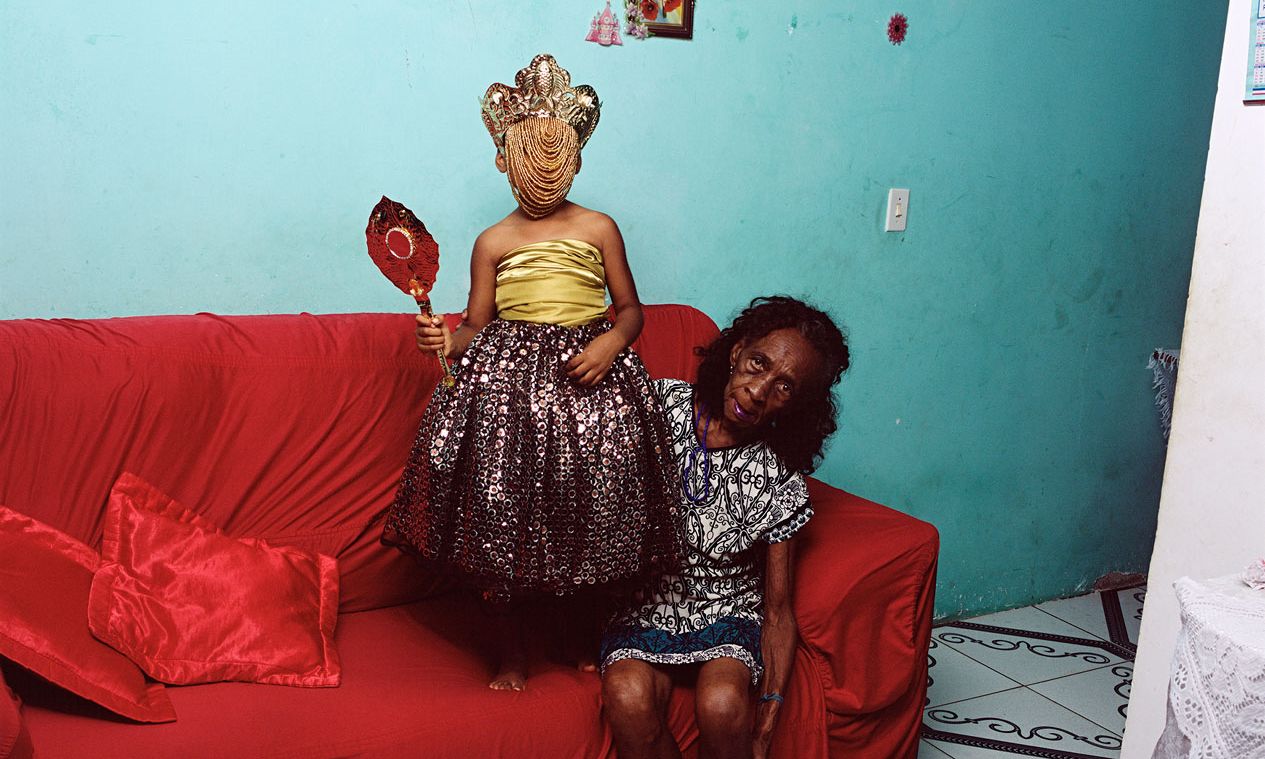Deana Lawson's An Ode to Yemaya (2019) © Deana Lawson
The US artist Deana Lawson has won this year’s Deutsche Börse Photography Foundation Prize, one of the world’s most prestigious photography awards, for her unsettling, sometimes surreal, interventions and manipulations of candid snapshots.
“Deana Lawson is a deserved winner of this year’s prize not least for the sheer inventiveness and complexity of her approach to image making,” says Brett Rogers, the director The Photographers’ Gallery and chair of the prize’s jury. “Her work, which reframes and reclaims the Black experience, harnesses the traditional and the experimental and opens up a very unique connection between the everyday and the mystical.”
Lawson has been awarded the £30,000 prize for her 2020 solo exhibition Centropy at the Kunsthalle, Basel, and her works, along with those of the other shortlisted artists can be seen at The Photographers’ Gallery in London (until 12 June).
Installation view of Lawson's work at The Photographers' Gallery, London Photo: Kate Elliot
Lawson’s work plays with scale and traditional hierarchies, for instance by blowing up damaged snapshots—one scribbled on, another seemingly water damaged—and shrinking down (and inverting) majestic images of nature, in this case the Niagara Falls, while using mirrored frames and sometimes introducing other elements such as holograms.
Lawson’s works also provide an intimate insiders' view to the lives of others but we are never quite sure what is going on: a man holds the viewer's gaze seated alongside a dead body at a wake, while a woman poses with a masked child. “The boldness of her vision and the empowered sensibility she brings to her protagonists is clearly the result of a carefully nuanced collaboration with her cast of ‘family’ members, which places her in a rare position of partner or narrator rather than Auteur,” Rogers says.
The jury consisted of the artist Yto Barrada; the New York Times’s deputy director of photography Jessica Dimson; the Tate Modern’s photography curator Yasufumi Nakamori; and the director of the Deutsche Börse Photography Foundation, Anne-Marie Beckmann. The three other shortlisted photographers—Anastasia Samoylova, Jo Ractliffe and Gilles Peress—were also commended by the members of the jury and each receive £5,000.
Anastasia Samoylova's Pink Sidewalk (2017) from the series FloodZone © Anastasia Samoylova
The Russian photographer Anastasia Samoylova was nominated for her FloodZone exhibition at Moscow’s Multimedia Art Museum, which featured a series of images highlighting how the effects of climate change are not some future prospect but are already being felt, in this case in Miami, Florida. Samoylova’s uncanny photographs play with the boundaries between the manmade and natural landscapes, as the two increasingly abut against each other. Although many of the images are playful, whether a tarpaulin printed with a tropical forest or palm trees toppling over a pink pavement, they have a serious undertone.
Jo Ractliffe's Roadside stall on the way to Viana (2007) from the series Terreno Ocupado © Jo Ractliffe
The South African photographer Jo Ractliffe was nominated for her Photographs 1980 – Now book. It brings together landscape photographs taken in Angola and South Africa over the past four decades, which often depict the remnants of conflicts or scars of industry. The black and white photographs emphasise the burning sun that washes out the landscapes, whether in images of hillside missile bunkers, graves, or a small building used as a “comfort station”. Ractliffe’s use of silhouttes and animals in her images are also striking. The creatures are often lone subjects that highlight the harsh conditions, such as a suspended dead bird, a solitary donkey at an asbestos mine or a street dogs rummaging among rubbish.
Images from Gilles Peress's Whatever You Say, Say Nothing from the chapter 'The Last Night' © Gilles Peress
The French photographer Gilles Peress was nominated for the Whatever You Say, Say Nothing book of images mostly taken in the 1980s in Northern Ireland during the Troubles. In the Photographers’ Gallery show they are arranged in concertinas, strips and grids on the wall. The images do not adhere to a simple narrative but instead evoke the extremes of the period, and are arranged into “semi-fictional” days in the book. Peress builds up a picture of the times, with images of Ulster men marching or snoozing on the grass, children playing on swings, teens kissing as a fire in the street roars white, guns, a woman in hair rollers, goalposts in the snow, and graffiti saying “Fuck the Queen”.

